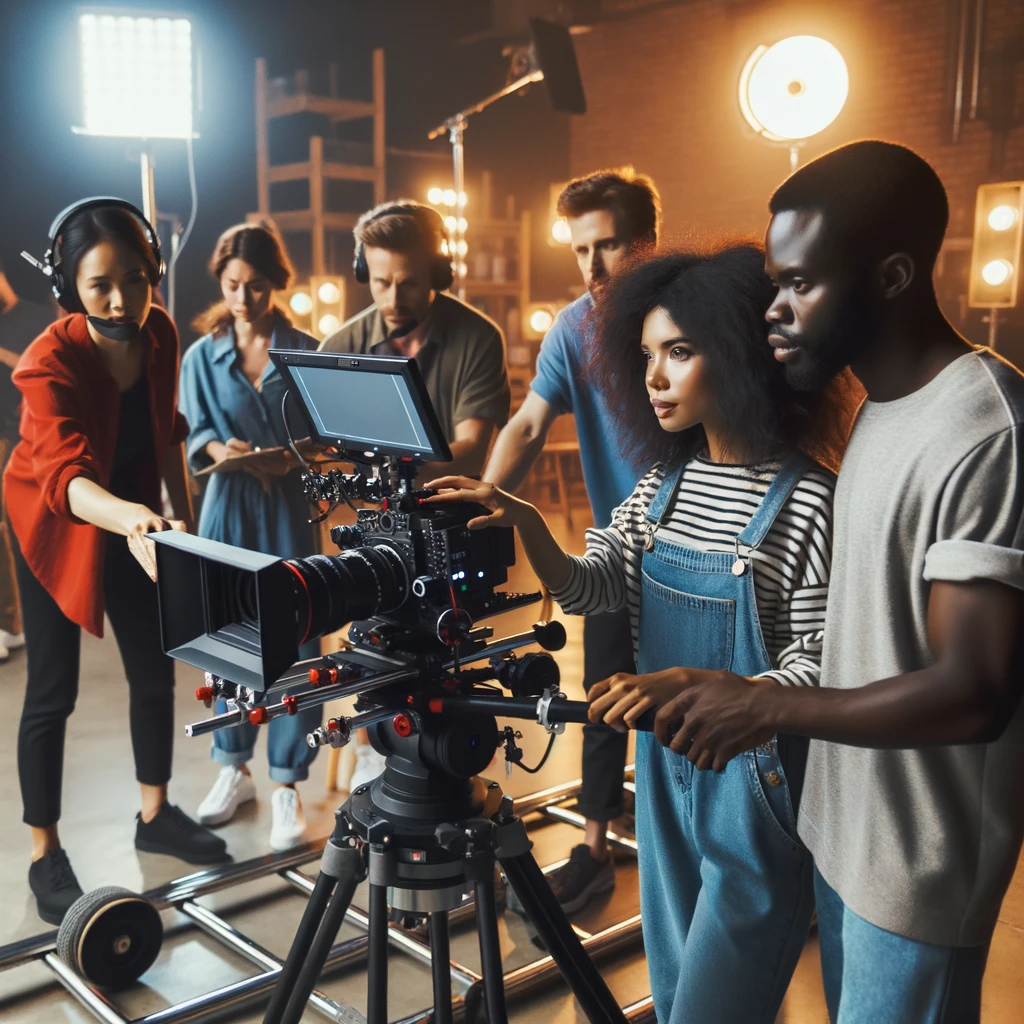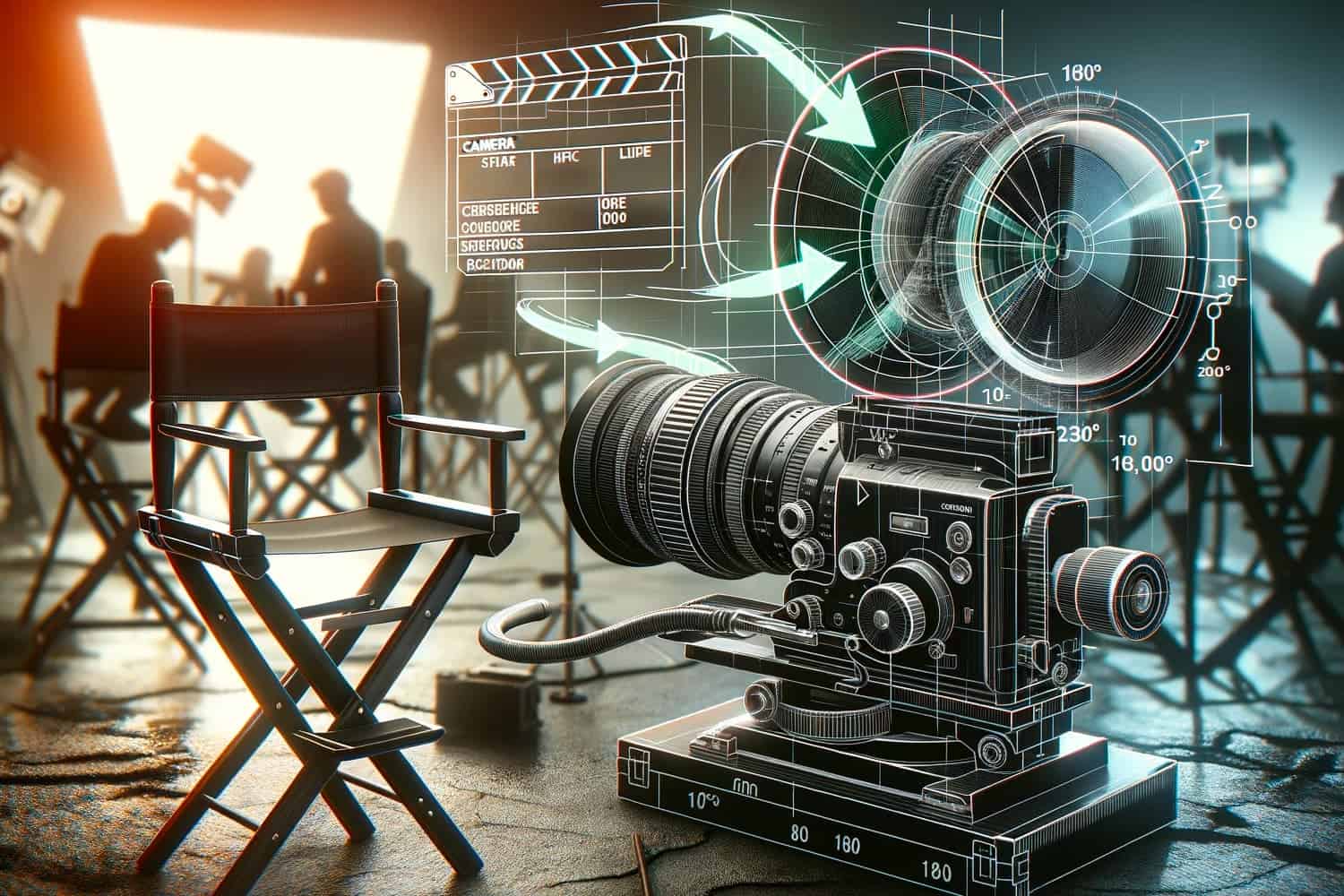In the realm of filmmaking and video recording, there are many rules and guidelines that professionals adhere to to achieve the best possible results. One such crucial rule, often referred to as the 180-degree shutter rule, stands as a cornerstone for capturing smooth, cinematic motion.
What is the 180-Degree Shutter Rule?
The 180-degree shutter rule states that the shutter speed should be double the frame rate. So if you’re shooting at 24 fps, your shutter speed should be 1/48th of a second. If your camera doesn’t offer a 1/48th option, the closest available, often 1/50th of a second, is used.
This rule comes from the idea that a 180-degree shutter exposes each frame for half the time. At 24 fps, each frame is exposed for 1/48th of a second. The first half of that time exposes the frame, and the second half is the black space between frames.
Note: The 180-degree shutter rule should not be confused with the 180-degree rule (a.k.a. Line of Action Rule) in videography, which serves a very different purpose
Why Follow the 180-Degree Shutter Rule?
The key reason for adhering to this rule is motion blur. Following the 180-degree shutter rule results in natural-looking motion blur within each frame. This motion blur mimics what we see with our eyes in real life. Footage will look smooth and fluid.
With a slower shutter speed, motion blur within each frame increases, resulting in blurry and choppy-looking footage. And if you use a faster shutter speed, there won’t be enough motion blur, making movements look unnaturally sharp and robotic.
The 180-degree shutter rule provides a happy medium for capturing smooth motion blur within each frame while maintaining sharpness between frames.

Where is the rule used?
The 180-degree shutter rule is commonly employed in the following applications:
- Film production – Especially narrative films and documentaries where smooth, realistic motion is desired. The 180-degree shutter is the standard for cinematography.
- Television production – Both for broadcast television and streaming. Dramas, comedies, commercials, etc. Again, the 180-degree rule creates natural-looking motion.
- Sports videography – Slow motion requires a higher frame rate and shutter speed, but the 180-degree rule still applies.
- Freelance videography – For weddings, events, interviews and more. Videographers often use the 180-degree rule as a starting point.
- YouTube/vlogging – Top YouTubers and vloggers will follow the 180 rule to achieve cinematic motion blur in their videos.
- Video editing – When editing footage, using the 180-degree shutter as a reference helps match shots and sequences.
Don’t follow it blindly!
The rule originates from the days of film cinema, where rotary shutters were half-circular. As the film reel moved, the half-circle shutter would cover half the film, allowing it to be exposed to light for half the time. This resulted in each frame being exposed for half of its cycle, hence the “180-degree” designation.
This carried over as a good starting point for shutter speed on early digital video cameras to achieve natural motion blur similar to what we see in films. However, most digital cameras don’t have a physical rotary shutter. They use electronic shutters that simply read the sensor from top to bottom.
A key point to note is that the 180° shutter rule loses its strict applicability when shooting at high frame rates intended to be displayed at those same rates. In contemporary broadcasting, 48, 50, and 60 fps content is often shot with a 360° shutter, a feat impossible with traditional film cameras. This is because digital cameras, equipped with electronic shutters and devoid of film advancement constraints, can achieve exposure times equal to the entire duration of a frame.
Some important aspects to understand:
- Shutter speed, not shutter angle, directly controls motion blur. Applying the same shutter angle (e.g. 45, 90, 180, 360 degrees) gives different amounts of motion blur at different frame rates
- At higher frame rates intended for normal playback, a 180-degree shutter results in less motion blur than at 24 fps.
- For natural motion blur at any frame rate, start with a shutter speed around 1/48 or 1/50 sec. Adjust as needed for creative intent or situations like shooting slo-mo.
So while the 180-degree rule was especially helpful for film, in this digital era the 180-degree rule is better used as a starting point than followed rigidly.
When to Break the 180-Degree Rule
While the 180-degree shutter rule is a good guideline, there are times when you may want to intentionally break it:
- You want choppy, stylized footage – Use a faster shutter speed like 1/120th or 1/250th.
- You want to create a sense of stopped motion – Use a much faster shutter speed like 1/500th.
- You want more motion blur like when panning quickly – Use a slower shutter speed like 1/30th.
So feel free to experiment once you understand the basic 180-degree shutter rule. Use different shutter speeds for creative effect while keeping the rule in mind as your starting point.
The 180-degree shutter rule is an easy way to get smooth, natural-looking motion blur in your videos. Keep it in mind for well-exposed, fluid footage!
